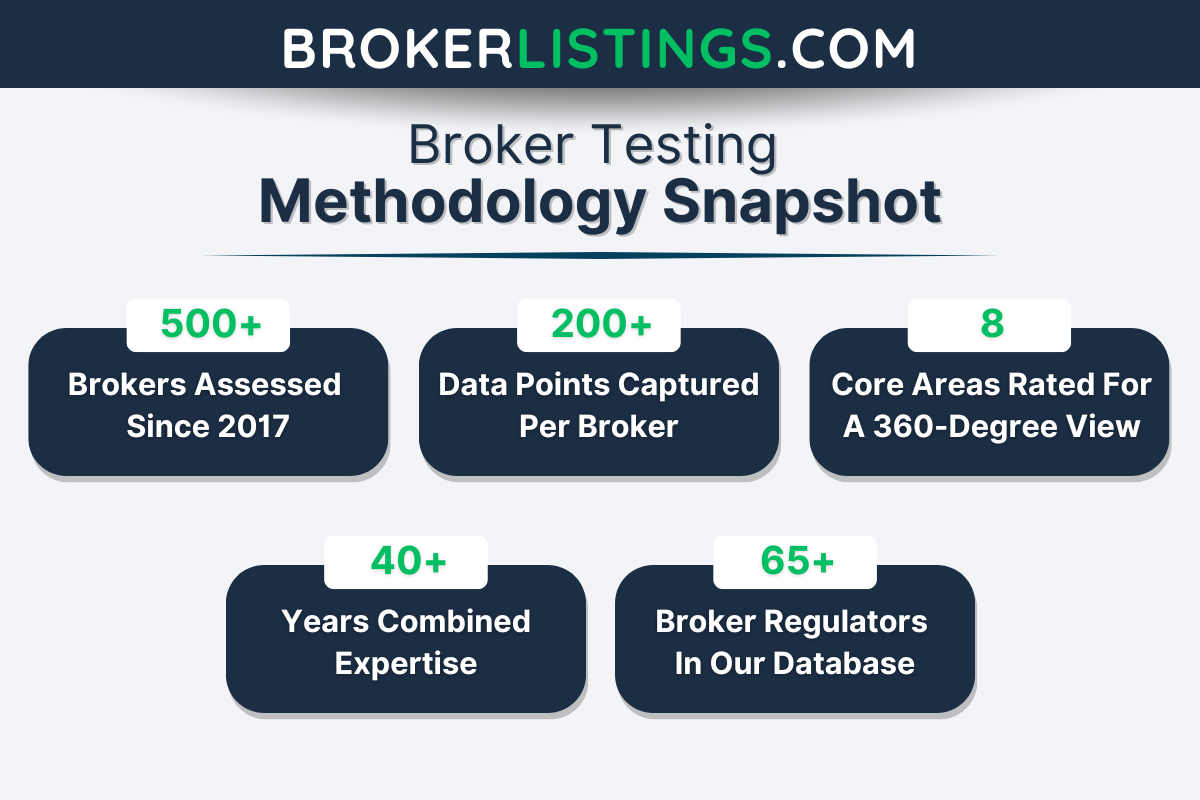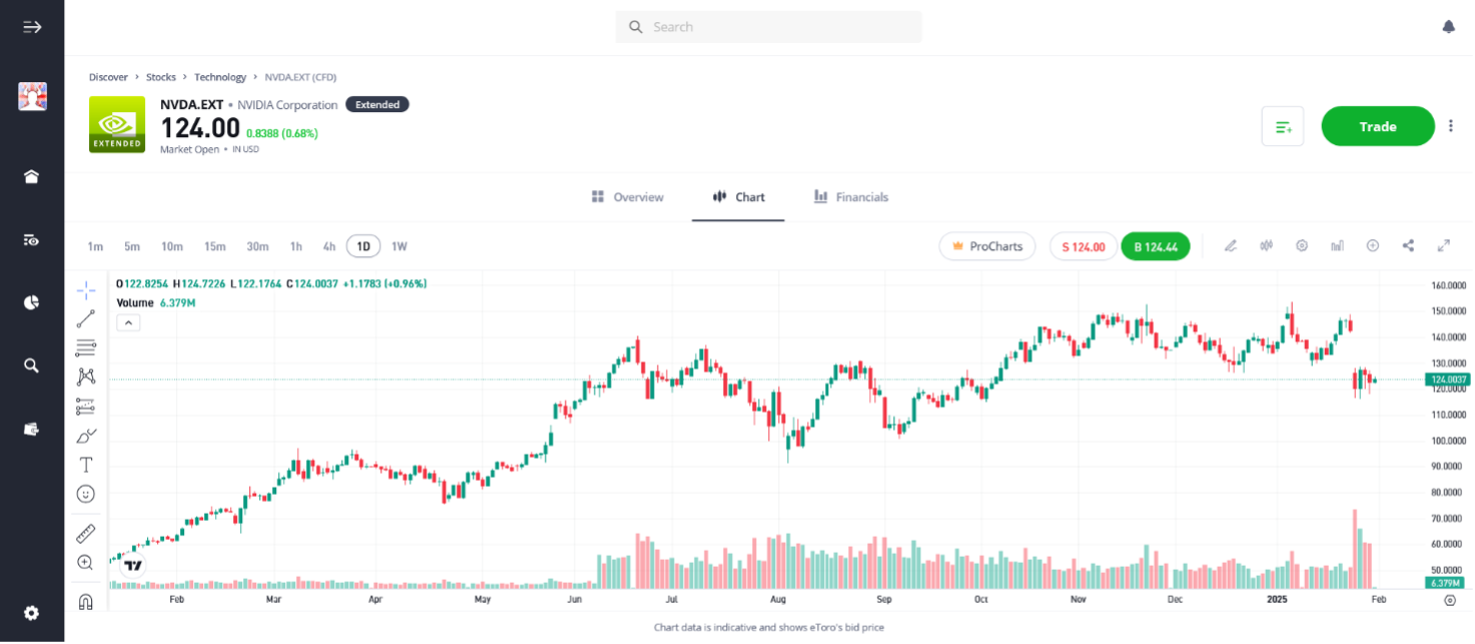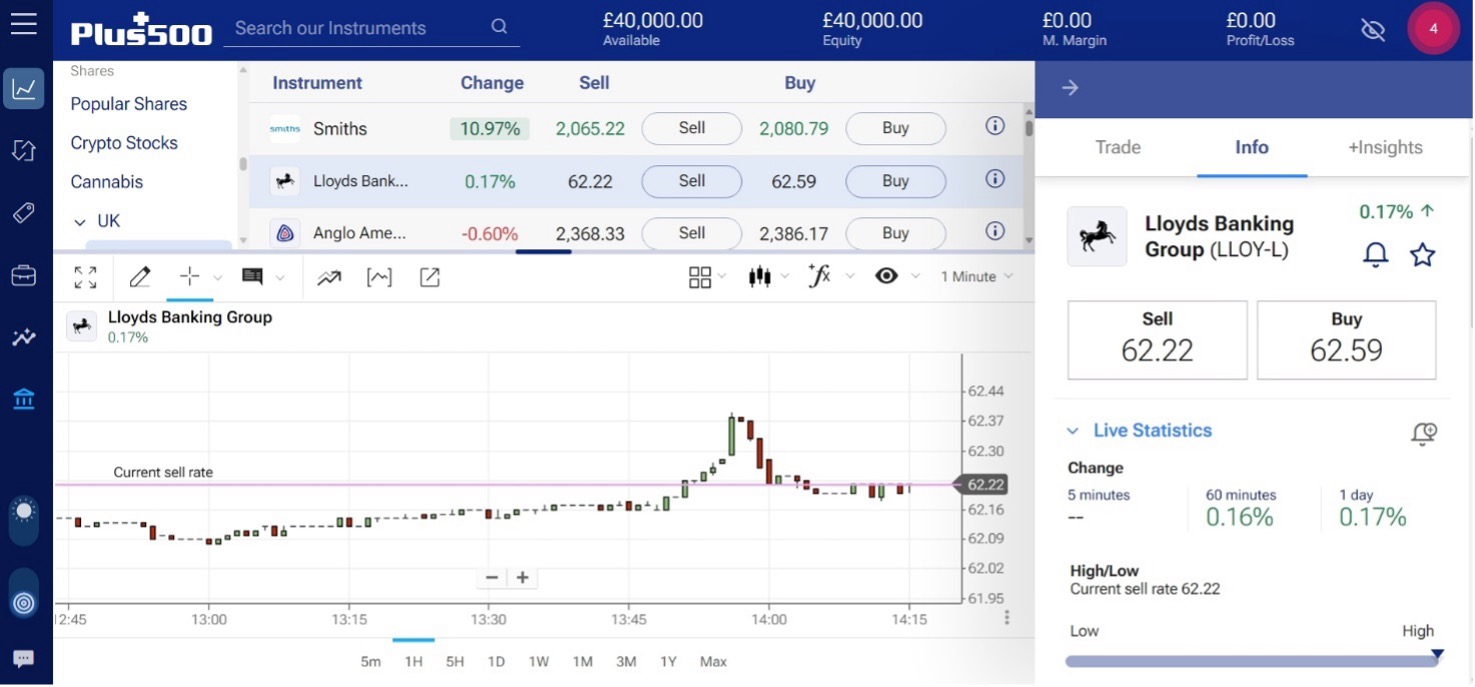Best Stock Brokers 2025
We’ve rigorously tested hundreds of stock trading platforms, pinpointing the top brokers based on market access, reliability, costs, tools and user experience.
-
1
IBKR offers a vast selection of equity products from 24 different countries. If you want to increase your capital, earn dividends, or have voting rights, you can invest directly in stocks. On the other hand, if you want to trade based on price movements, you can do so through CFDs, futures, and over 13,000 ETFs. Moreover, in 2024, IBKR expanded its European equity derivatives by including trading on CBOE Europe Derivatives (CEDX).
Stock Exchanges
Interactive Brokers offers trading on 16 stock exchanges:
- Borsa Italiana
- CAC 40 Index France
- Chicago Mercantile Exchange
- Euronext
- IBEX 35
- Japan Exchange Group
- Korean Stock Exchange
- London Metal Exchange
- London Stock Exchange
- Nasdaq
- Nasdaq Nordic & Baltics
- New York Stock Exchange
- Russell 2000
- Shenzhen Stock Exchange
- Tadawul
- Toronto Stock Exchange
-
2
Trust Platform Assets Fees Accounts Research Education Mobile Support 4.5 You can trade stocks using the NinjaTrader platform with supported brokers. The company also offers various index futures through regular and micro contracts, such as the E-Mini S&P 500 Index Futures and E-Mini Russell 2000 Index Futures.
Stock Exchanges
NinjaTrader offers trading on 2 stock exchanges:
- Chicago Mercantile Exchange
- New York Stock Exchange
-
3
Trust Platform Assets Fees Accounts Research Education Mobile Support 3.4 eToro US allows you to trade over 3000 renowned US stocks and ETFs without any commissions. You also have the option to trade with fractional shares. The broker is especially suitable for novice traders due to its extensive eToro Academy and easy-to-use stock market research tools.
Stock Exchanges
eToro USA offers trading on 3 stock exchanges:
- Dow Jones
- New York Stock Exchange
- S&P 500
-
4
Trust Platform Assets Fees Accounts Research Education Mobile Support 4.4 FOREX.com offers numerous US, EU, and UK stock CFDs with tight spreads starting from 1 point. You can trade in well-known companies as well as upcoming IPOs, promoting variety in your stock portfolio. You can access US stocks for a minimal cost of 1.8 cents per share.
Stock Exchanges
FOREX.com offers trading on 14 stock exchanges:
- Australian Securities Exchange (ASX)
- Borsa Italiana
- CAC 40 Index France
- DAX GER 40 Index
- Dow Jones
- Euronext
- FTSE UK Index
- Hang Seng
- Hong Kong Stock Exchange
- IBEX 35
- Japan Exchange Group
- Nasdaq
- S&P 500
- SIX Swiss Exchange
-
5
Trust Platform Assets Fees Accounts Research Education Mobile Support 3.5 Trade binary options and CFDs on global stocks from US, European, Russian, and Asian exchanges, along with 37 indices covering global markets. Access to stocks is superior to many binary options brokers, especially with major companies like Palantir, Apple, and Meta added to the online platform in 2025.
Stock Exchanges
Videforex offers trading on 7 stock exchanges:
- Dow Jones
- FTSE UK Index
- Hong Kong Stock Exchange
- IBEX 35
- Nasdaq
- S&P 500
- SIX Swiss Exchange
Top Stock Trading Brokers Comparison
Broker Details Comparison
Safety Comparison
Compare how safe the Best Stock Brokers 2025 are.
Mobile Trading Comparison
Compare the mobile trading features of the Best Stock Brokers 2025.
Comparison for Beginners
Compare how suitable the Best Stock Brokers 2025 are for beginners.
Comparison for Advanced Traders
Compare how suitable the Best Stock Brokers 2025 are for advanced or professional traders.
Accounts Comparison
Compare the trading accounts offered by Best Stock Brokers 2025.
Detailed Rating Comparison
Compare how we rated the Best Stock Brokers 2025 in key areas.
Fee and Cost Comparison
Compare the cost of trading with the Best Stock Brokers 2025.
Broker Popularity
See how popular the Best Stock Brokers 2025 are in terms of number of clients.
| Broker | Popularity |
|---|---|
| Interactive Brokers |
|
| eToro USA |
|
| NinjaTrader |
|
| FOREX.com |
|
| Videforex |
|
Why Trade With Interactive Brokers?
Interactive Brokers is ideal for seasoned traders due to its robust charting platforms, updated data, and adaptability, especially with the IBKR Desktop application. Its exceptional pricing and advanced order features appeal to traders, and its variety of stocks remains unmatched in the market.
Pros
- Interactive Brokers has introduced ForecastTrader, a zero-commission service allowing users to trade yes/no Forecast Contracts on political, economic, and climate events. Contracts offer fixed $1 payouts, 24/6 market access, and a 3.83% APY on held positions.
- IBKR provides a cost-effective platform for traders by offering low fees, narrow spreads, and clear pricing.
- The new IBKR Desktop platform combines the advantages of TWS and adds unique tools like Option Lattice and Screeners with MultiSort to make trading accessible and impressive for traders of all levels.
Cons
- TWS's platform may be difficult for beginners to grasp because of its complexity - we were overwhelmed during our initial tests by the sheer volume of tools, features and widgets.
- IBKR offers many research tools. However, the tools are not uniformly distributed across trading platforms and the web-based 'Account Management' page, causing confusion for the users.
- Customer service may take time to respond, and there may be delays in fixing problems based on tests. It could be difficult to reach the customer service promptly.
Why Trade With NinjaTrader?
NinjaTrader consistently satisfies active futures traders with its low-cost service and high-quality analysis tools. It offers superior charting features, including hundreds of indicators and over 10 chart types.
Pros
- NinjaTrader is a well-regarded and acclaimed futures broker, approved by the NFA and CFTC.
- You can access thousands of applications and add-ons from developers worldwide for trading.
- Traders can access a free platform and trade simulation capabilities with the unlimited demo.
Cons
- The advanced trading tools require an additional fee.
- Some payment methods require a withdrawal fee.
- You need to register with partner brokers to trade in securities other than forex and futures.
Why Trade With eToro USA?
eToro is a top choice for traders due to its top-notch social investing and copy trading services. The broker caters well to new traders with its low deposit requirement, commission-free trading, and user-friendly platform.
Pros
- The online broker provides a user-friendly social investment network for easy crypto trading replication.
- Traders can use Smart Portfolios for a simpler approach, covering multiple sectors and markets like renewable energy and artificial intelligence.
- eToro USA Securities is a reliable broker that's regulated by the SEC, part of FINRA, and a member of SIPC.
Cons
- Average fees can reduce the profits of traders.
- There are fewer trading options available, including only stocks, ETFs, and cryptos, compared to competitors.
- The exclusive terminal does not accommodate trading bots and lacks extra equity market analysis tools.
Why Trade With FOREX.com?
FOREX.com is a top-tier brokerage suitable for forex traders of all skill levels. It offers more than 80 currency pairs, has small spreads starting from 0.0 pips, and features low fees. The platform provides powerful charting tools that include over 100 technical indicators and multiple research aids.
Pros
- Numerous educational materials such as tutorials, webinars, and a comprehensive YouTube channel are available to assist you in learning about the financial markets.
- FOREX.com provides top-tier forex pricing beginning at 0.0 pips. They also offer competitive cashback rebates up to 15% for dedicated traders.
- FOREX.com has over 20 years of experience with strong regulatory oversight, and has received multiple awards, including second place in our 'Best Forex Broker' awards. As such, FOREX.com is globally reputed as a reliable trading brokerage.
Cons
- FOREX.com's MT4 platform provides around 600 instruments for trading, which is considerably less than the 5,500+ options accessible on its other platforms.
- US clients do not have negative balance protection, so you can potentially owe more than your original account deposit.
- The funding options are not as extensive as those of top competitors such as IC Markets and lack several widely-used e-wallets, particularly UnionPay and POLi.
Why Trade With Videforex?
Videforex caters to traders who want a simple platform for predicting the trends of major financial markets through binary options. With a swift registration process and web-based platform, it's easy to get started.
Pros
- Videforex is a rare brokerage with 24/7 multilingual video support, offering extensive help for active traders.
- Videforex has added over 60 new assets, offering traders access to popular crypto (TON, ARB, PEPE, SHIB), leading tech stocks (Tesla, Meta, Nvidia, Amazon), and a more diverse FX portfolio (THB, ZAR, MXN).
- Traders have the opportunity to earn up to 98% payouts on over 100 assets through the broker's binary options. This offering is comparable to competitors such as IQCent.
Cons
- Our latest tests indicate that the client terminal requires upgrades due to occasional slow and unresponsive widgets, which may negatively affect the experience for traders.
- The lack of educational resources is a significant disadvantage for new traders, as top trading platforms often provide useful content like blogs, videos, and live trading sessions.
- Videforex is not authorized by a reliable regulator. This means traders may not get important protections such as separate client accounts.
Filters
How We Chose the Best Stock Brokers
We conducted an in-depth evaluation of each stock broker, assigning overall ratings and sorting providers by this. Here’s what our analysis included:
- Quantitative Metrics: We examined over 200 data points across eight key areas. This included assessing the range of stock exchanges and equity indices each broker provides, the spreads on popular stocks like Apple, and whether commission-free trading, which is increasingly popular, is available.
- Qualitative Insights: Our hands-on testing provided valuable insights into the overall stock trading experience. We also evaluated whether brokers went above and beyond by offering features like share baskets, sustainable stocks, and extended trading hours, that impact traders’ access to markets and cost efficiency.

What to Consider When Searching For a Stock Broker
After years of evaluating stock brokers and personally using the services of various providers to buy, sell and trade individual stocks, we know the quality among firms can vary dramatically.
However, we’ve whittled it down to these five critical considerations:
1. Regulatory Status
This should be at the top of the list for any trader and investor. Increasing levels of online fraud, often targeted through social media, mean it’s important to check the regulatory status of a brokerage before depositing any cash or handing over personal details.
The protection that investors enjoy can range greatly across regions. So it’s a good idea to use a company that’s licenced by a reputable financial authority in a well-developed financial location.
Examples include the Financial Conduct Authority (FCA) in the UK, or the Securities and Exchange Commission (SEC) in the US.
Pro tip: You should be able to find the regulatory status of a brokerage on most regulators’ websites. Alternatively, check BrokerListings.com’s pick of the top regulated brokers.
Some highly trusted stock brokers, such as Plus500, are themselves listed on stock exchanges (PLUS), ensuring a high degree of financial transparency.
2. Trading Platform
There can be vast differences in the platforms, trading apps, and research tools that different brokerages offer. Ask yourself:
- How easy is it to navigate the platform and execute stock trades quickly, especially during market volatility?
- Does the platform offer real-time news feeds, economic calendars, and other relevant resources to help you make informed trading decisions?
- How fast does the broker execute stock orders, and does the platform offer reliable execution during high-volume periods?
- What risk management tools are available, such as guaranteed stop-loss orders or margin alerts, to help protect your positions and maximize potential gains?
- Does the broker integrate with third-party trading tools, such as MT4, MT5, TradingView, or cTrader, for advanced charting and analysis?
- What security measures are in place to protect your account and personal data, such as two-factor authentication (2FA)?
Some platforms also allow individuals to ‘trade’ using virtual cash, known as demo trading accounts. This is a facility you can use to refine your trading strategy and get up to speed with the stock markets when starting out.
eToro‘s brilliant web platform and smartphone app makes it a popular broker with stock traders. Both new and experienced traders, myself included, like its community chat function which can provide fresh ideas spanning everything from penny stocks to blue chips.

3. Stock Market Access
Look at the breadth of exchanges, indices and sectors you can access. Most firms we’ve evaluated offer US stocks, while the good ones also provide opportunities in European, UK, Asian, Australian and other global markets.
IG‘s trading platform offers a wealth of trading opportunities. You can buy and sell a whopping 3,000+ global equities on established exchanges (like the London Stock Exchange and NASDAQ) as well as exotic ones in emerging markets.
Pro tip: Some brokers allow experienced individuals to trade stocks with derivative products like contracts for difference (CFDs). These instruments facilitate financial market speculation without the need for an individual to hold any underlying shares.
4. Fees and Charges
Choosing a stock broker is about more than just the platform – it’s about minimizing costs, especially if you’re a frequent trader where transaction costs can mount.
Pay close attention to trade commissions, management fees, and bid-offer spreads on the equities you plan to trade such as Tesla, Microsoft and Nvidia, as high costs can quickly eat into your profits.
Also, consider whether you’re getting bang for your buck. Features like commission-free trading, share baskets, and extended hours on US equities offer added flexibility and access to a broader range of opportunities.
Equally, analysis of the stock markets by a brokerage’s experts and customizable stock screeners can elevate the experience, and might be worth paying more for.
IC Markets provides a superb balance of low costs and premium tools, with spreads on stocks as tight as 0.02, and access to Trading Central and Autocharist for market insights.
5. Leverage
Many brokers allow customers to place trades with borrowed money. This is known as trading on margin, and is a popular – but high-risk – way in which individuals try to maximize profits by controlling larger positions.
The amount of leverage available will differ across brokerages, as will the level of collateral a trader will put down. Plus500, for instance, offers leverage of 1:5 for trading share CFDs. This means I can control a position of $50 for every $10 I invest.
Pro tip: Risk management is vital if you intend to trade stocks with leverage. While the level of leverage provided is generally lower than markets like forex and crypto, it remains a high-risk way to trade.

FAQ
What Is a Stock Broker?
Stock brokers facilitate the dealing of shares and other financial securities on behalf of buyers and sellers.
Once these intermediaries have received a trading instruction from a customer, they will get in touch with a market maker – institutions which hold a variety of assets on account – to complete the deal.
The range of services offered by stock brokers can vary significantly. Broadly speaking, these fall into two categories:
- Full-service stock brokers, which provide additional services (such as investment advice and portfolio management) alongside trade execution.
- Execution-only stock brokers, which facilitate a basic trading-only function in exchange for a lower cost.
Some financial services providers act as both brokerage and market maker. This can have advantages for traders like us, such as faster trade execution and tighter bid and ask spreads.
However, reduced transparency and potential conflict of interest are key considerations for investors using such companies.
How Do Stock Brokers Make Money?
Stock brokers often earn by charging a commission, which is often a fixed fee per trade.
However, some brokers like Moomoo are increasingly providing commission-free trades and make money off the spread – the difference between the buy and sell price of a stock.
Some brokers also act as market makers, earning even if you lose on a trade.




